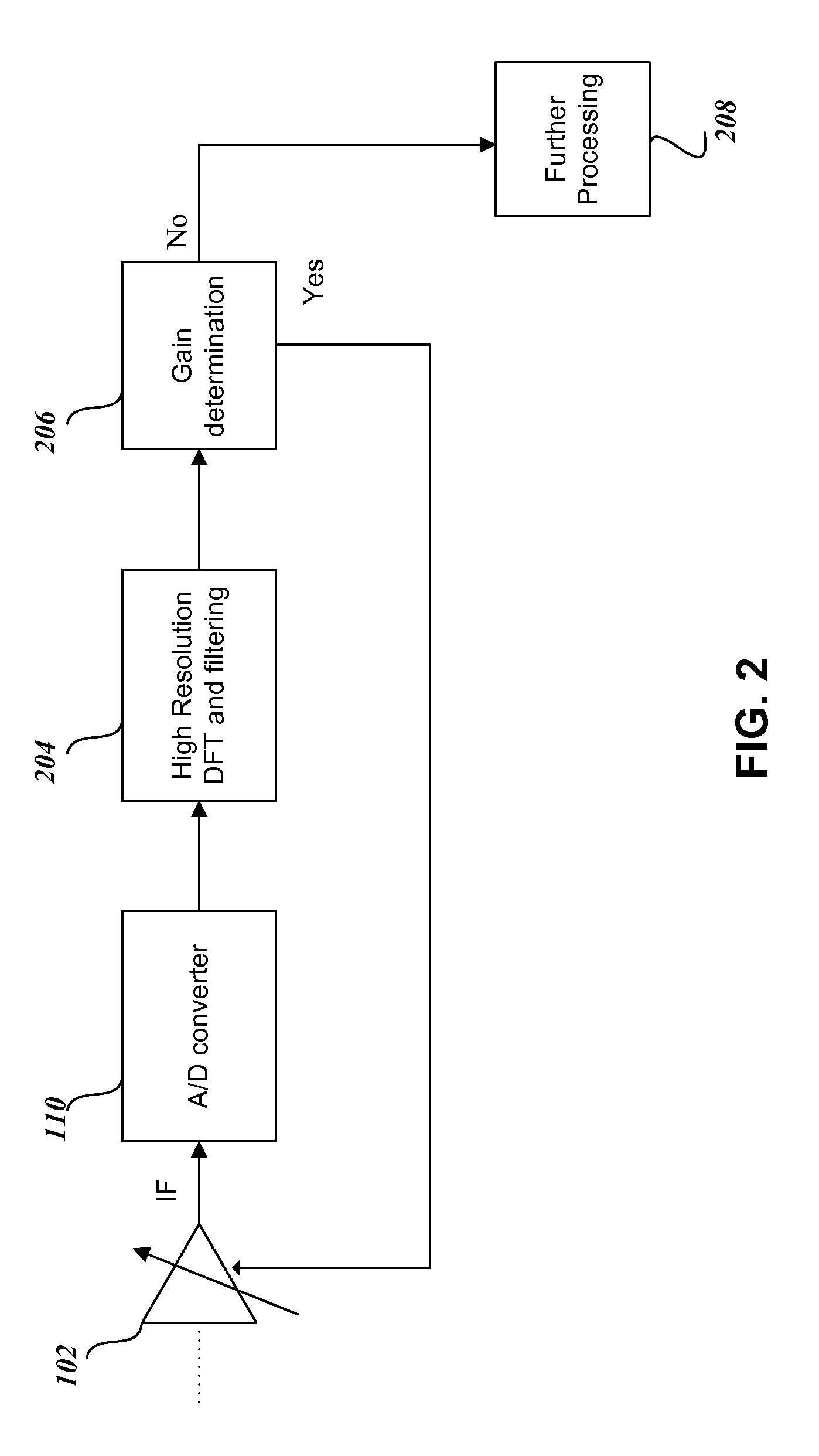Variable gain control for high speed receivers
a receiver and variable gain technology, applied in gain control, multi-frequency code system, instruments, etc., can solve the problems of receivers with sub-optimal dynamic range, signal-to-noise ratio problems, and not necessarily enough accuracy or range to properly select the gain
- Summary
- Abstract
- Description
- Claims
- Application Information
AI Technical Summary
Benefits of technology
Problems solved by technology
Method used
Image
Examples
Embodiment Construction
[0020]FIG. 3 illustrates components of a receiver system 300 for determining gain ranging decisions in a high speed receiver environment according to embodiments of the present invention. The receiver 300 includes a variable gain amplifier 302. The variable gain amplifier 302 can, e.g., receive the intermediate frequency (IF) output 312 from a downconverter (not shown) of a receiver that has a variable gain input (the output from the downconverter is similar to the IF signal 108 of FIG. 1). The variable gain amplifier being controlled can also be a RF variable gain amp or it can represent multiple variable gain stages.
[0021]The variable gain amplifier 302 adjusts the gain of IF signal 312 based on a desired signal input to analog-to-digital (A / D) converter 304 and provides the gain adjusted IF signal to the A / D converter 304. If the variable gain is set too low, then the receiver will have sub-optimal dynamic range and signal-to-noise ratios can be a problem. If the variable gain is...
PUM
 Login to View More
Login to View More Abstract
Description
Claims
Application Information
 Login to View More
Login to View More - R&D
- Intellectual Property
- Life Sciences
- Materials
- Tech Scout
- Unparalleled Data Quality
- Higher Quality Content
- 60% Fewer Hallucinations
Browse by: Latest US Patents, China's latest patents, Technical Efficacy Thesaurus, Application Domain, Technology Topic, Popular Technical Reports.
© 2025 PatSnap. All rights reserved.Legal|Privacy policy|Modern Slavery Act Transparency Statement|Sitemap|About US| Contact US: help@patsnap.com



